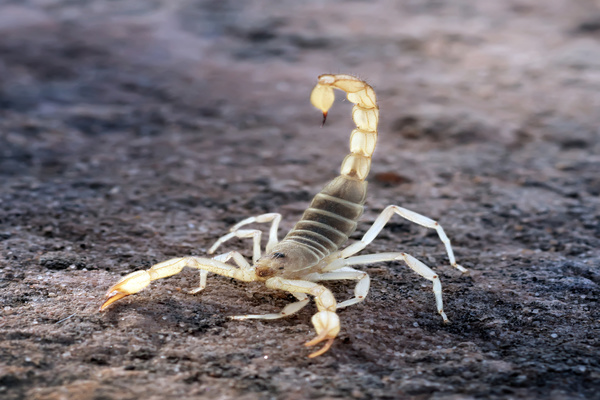
Showing 7 types of SCORPIONS
Latin Name: Centruroides sculpturatus
These are native scorpions that are found from southern California to New Mexico and south throughout northern Mexico in the Sonoran Desert.
Latin Name: Hadrurus arizonensis
This is a native species in the Sonora and Mojave Deserts, ranging from southern California to Arizona and into southern Nevada and Utah, then south throughout much of northwestern Mexico and the Baja. It is adapted to hot, dry conditions.
Latin Name: Vaejovis spinigerus
These are native scorpions. The family includes more than 84 species in the U.S. and they are distributed widely throughout the U.S. and western Canada, south through Central America.
Latin Name: Hadrurus spadix
This is a native scorpion in the Southwest and can be found in the same regions as the related Giant hairy scorpion in California, Arizona, and New Mexico, but also ranges further north into Colorado, Idaho, Oregon, and Utah. It also is found in northwestern Mexico.
Latin Name: Paruroctonus silvestrii
These are native scorpions. The family includes more than 84 species in the U.S. and they are distributed widely throughout the U.S. and western Canada, south through Central America.
Latin Name: Centruroides gracilis
This species is introduced from tropical areas of South America and now occurs widely throughout the Caribbean, Central America, and even into Africa. It is often kept as a “pet”, and this likely accounts for its spread throughout the world.
Latin Name: Vaejovis confusus
These are native scorpions. The family includes more than 84 species in the U.S. and they are distributed widely throughout the U.S. and western Canada, south through Central America.